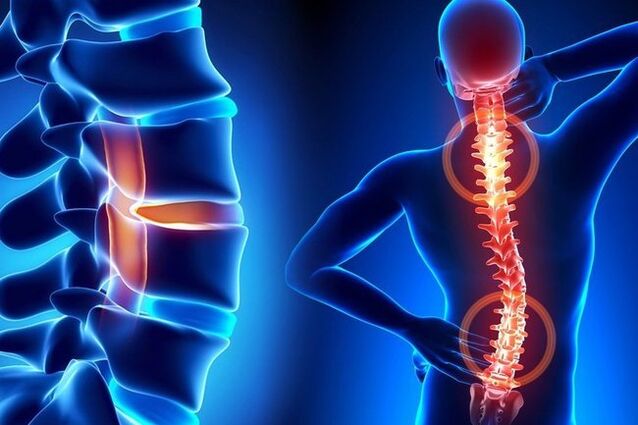Lumbar osteochondrosis is a very common disease. However, in no case is it recommended to switch to its course of treatment, as this can lead to serious consequences, including disability. The older a person is, the more likely he or she is to develop a disease such as osteochondrosis of the spine.

Unfortunately, older people with this disease face an average of 90% of cases. As for the special risk group, this includes those who do not lead a sufficiently mobile and active lifestyle. And such people, you see, are now in the majority.
The main causes of lumbar osteochondrosis
In the case of uneven distribution of the load on the muscles of the jaw and torso, the intervertebral discs are deformed and protrude between the vertebrae. This causes the spinal nerves to constrict. The result is a so-called radicular syndrome characterized by low back pain and a significant decrease in lumbar mobility.

The back wedges of a person with lumbar osteochondrosis do not occur suddenly, so experts recommend starting to solve the problem before it becomes critical. So it makes sense to check your body for any problems.
The main symptoms of osteochondrosis are:
- pain in the lower back (pain in the early stages of the disease is not very strong, but intensifies over time);
- restriction of mobility in the lumbar region;
- problems while walking;
- alignment of limbs.
Even diseases of the internal organs can occur due to compression of the intervertebral vessels. This happens when the disease is taken seriously. If you experience any of the above symptoms, it is recommended that you seek professional help immediately: a neurologist or therapist. The doctor will prescribe comprehensive therapy to effectively avoid worsening of the condition.
How to behave during an acute attack of osteochondrosis
If your back suddenly bends, you need to know what special actions to take while waiting for the ambulance crew. Thus, we are talking about the following manipulations:
- under no circumstances should a person be helped to correct, as such movements can not only cause a new attack of pain, but can also lead to further displacement of the vertebrae, which is fraught with the development of paralysis;
- if possible, help the person lie on the bed or sofa;
- do not touch the painful back area;
- the victim should be given an anesthetic that will reduce the pain;
- If the pain syndrome is moderate, the lumbar region should be treated with anesthetic ointment.
Features of treatment of lumbar osteochondrosis
The main task to be addressed in the treatment of lumbar osteochondrosis is the elimination of pain. After that, a number of measures should be taken to restore mobility and eliminate the cause of spinal nerve compression. In principle, in any case, the goal of treatment is to achieve complete recovery of the patient. In advanced cases, we are talking about the induction of stable remission with the restoration of most motor functions.
Treatment can be conservative and operative. Conservative treatment of lumbar osteochondrosis includes courses of analgesics, as well as general strengthening and anti-inflammatory therapy. Surgical treatment is performed only in cases where there is a real risk of paralysis against the background of significant displacement of the vertebral disc. During surgery, the hernia is removed, the intervertebral discs are replaced, and bone protrusions, adhesions, and scars are removed from the vertebrae.
In some cases, the use of folk remedies can be quite effective. For example, you can make compresses based on herbs. It is also useful to wrap the waist with scarves or shawls made of natural camel or any other wool.
Rehabilitation features for osteochondrosis
Rehabilitation measures are strongly recommended to consolidate the results of the treatment. It is better to exercise during remission in medical and physical education centers that are open in almost any city. A set of rehabilitation programs is selected individually for each person. This includes all treatments, including exercise therapy, massage and physiotherapy.



















